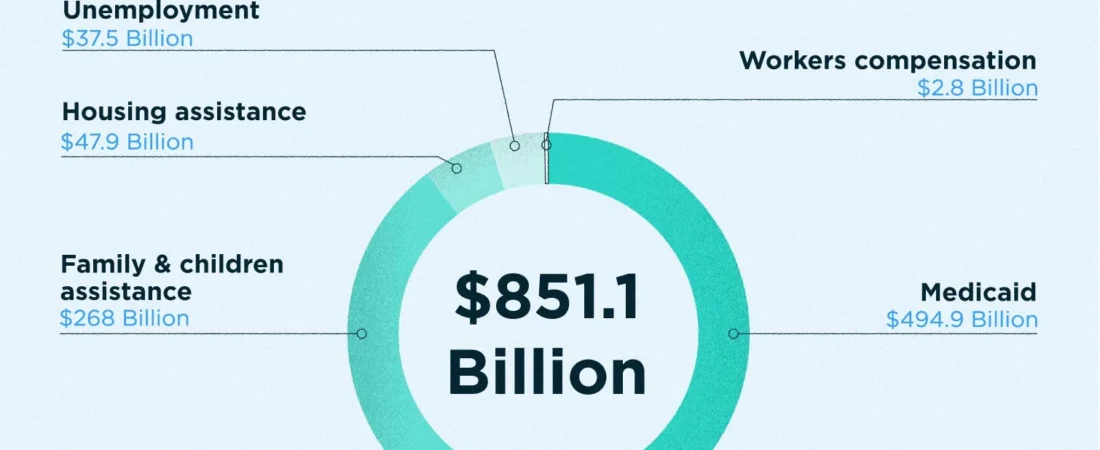Why not? Subsidized welfare.
As darkness settled over Boston Harbor, rebellious colonists, driven by a fierce sense of defiance, silently tossed chest after chest of valuable tea into the cold, black waters. This dramatic act of protest was a declaration against the tyranny of taxation without representation. Today, the IRS meticulously tracks every cent owed by millions of Americans without showing how the money is spent. They expect us to sift through complex budget reports, buried among everyone else’s contributions, and trust that our dollars are accounted for in there somewhere. Meanwhile, I can’t help but notice there are states where illegal immigrants are receiving better healthcare than I have. In our meritocracy, where hard work would typically prevail, social welfare programs have attracted those most inclined to exploit taxpayer contributions. Government social welfare programs are detrimental to working taxpayers due to the governments mismanagement of resources, systemic fraud, and the proclivity to create market imbalances.
Mismanagement of resources
The mismanagement of resources in government social welfare programs is draining the wallets of hardworking taxpayers. Billions of dollars are funneled into the initiatives, yet the funds are poorly allocated. According to the Government Accountability Office (GAO), improper payments across federal programs, including welfare, amounted to a staggering $247 billion in 2022 (1), highlighting rampant waste, and error. Programs like SNAP are burdened by excessive administrative costs, with states like California spending $808 per case compared to Florida’s much leaner $89 with no statistically significant improvement in service quality (2). This mismanagement is not just an oversight—it’s a systemic failure that leaves taxpayers footing the bill while predatory state bureaucrats milk these programs for jobs and a stable paycheck.
Systemic fraud
This systemic fraud undermines government welfare programs, affecting not just the bureaucratic machine but also the civic sphere. Unscrupulous individuals exploit loopholes within these systems, siphoning off funds intended for those genuinely in need. Fraudulent claims are rampant, with an estimated $280 billion in COVID-19 relief aid alone being fraudulently claimed (3).
This widespread fraud is not a series of isolated incidents; rather, it represents a deeply ingrained issue that thrives within the system of government subsidized welfare itself. This unchecked fraud not only drains public coffers but erodes the trust between the government and the hardworking citizens it is meant to serve. It has become a magnet for abuse, with taxpayer money lining the pockets of scammers instead of reaching those it’s meant to help.
Market distortion
Government-subsidized welfare programs distort market dynamics by artificially inflating demand, skewing prices, and crowding out private sector solutions. In housing, for instance, public programs increase the number of government-supported units but often at the expense of private development. A study revealed that for every three public housing units constructed, two private ones are lost, particularly in markets where demand is already high. (4) This crowding out effect diminishes competition, discourages private investment, and leads to inflated housing costs—particularly when voucher programs drive up rent prices artificially. Rather than allowing the market to balance supply and demand organically, government intervention creates inefficiencies that ripple through the economy. Taxpayers are left not only to cover the costs of these programs but to absorb the negative economic consequences of a market distorted by subsidized welfare.
How DO we enable social welfare?
Overall, government-subsidized social welfare programs frequently leave hardworking taxpayers feeling exploited due to mismanagement, systemic fraud, and market distortions. Billions are squandered on poorly allocated funds, undermining the intended objectives of these initiatives. Moreover, pervasive fraud diminishes public trust, while government interventions disrupt market dynamics, inflating costs and discouraging private investment. A more effective approach would be to empower the private sector to manage their own welfare programs by reallocating voucher funds into grants for nonprofits, unions, or corporations willing to help. This shift would ensure taxpayer contributions are directed toward initiatives that efficiently and effectively enhance social welfare and serve the interests of taxpayers.
Source URLs


